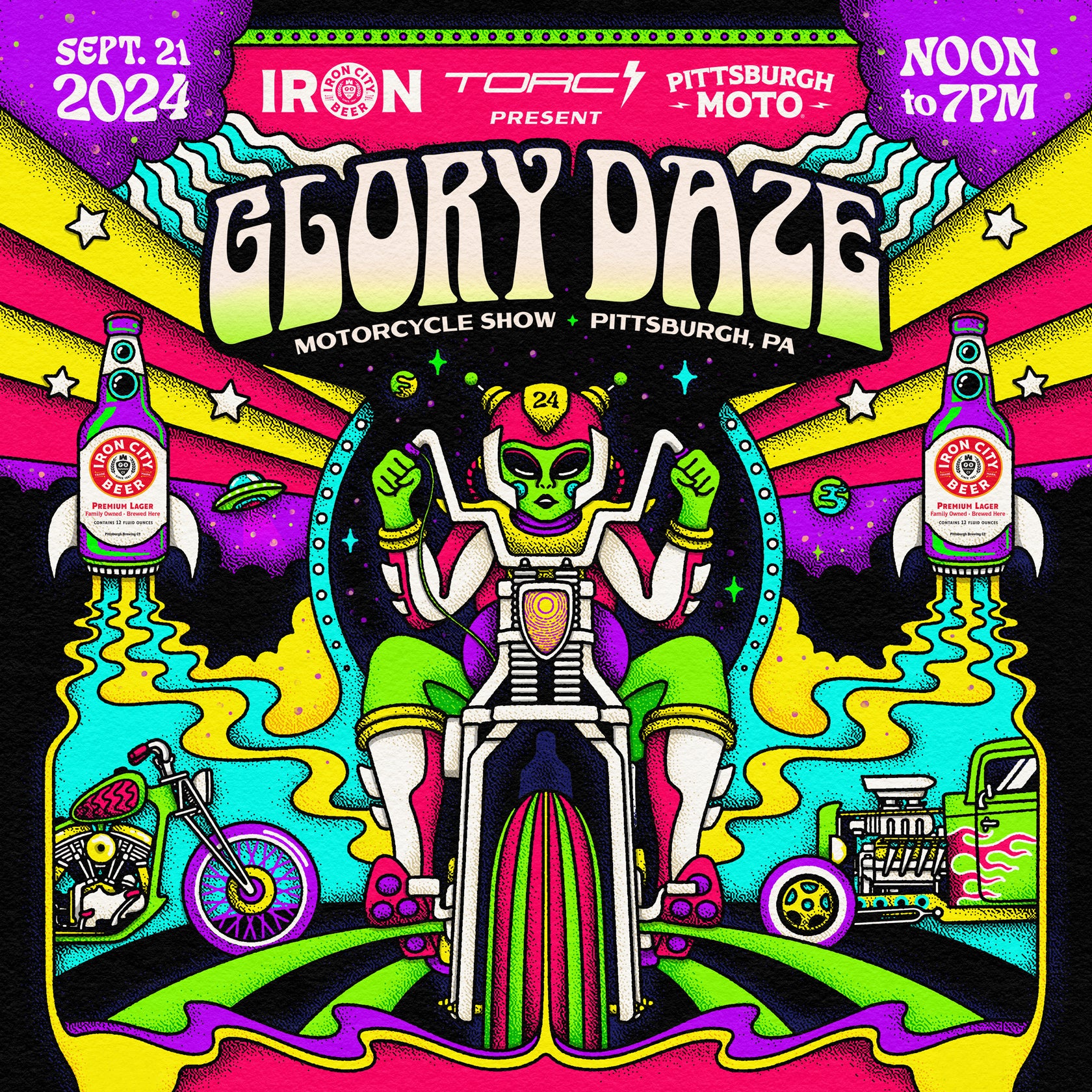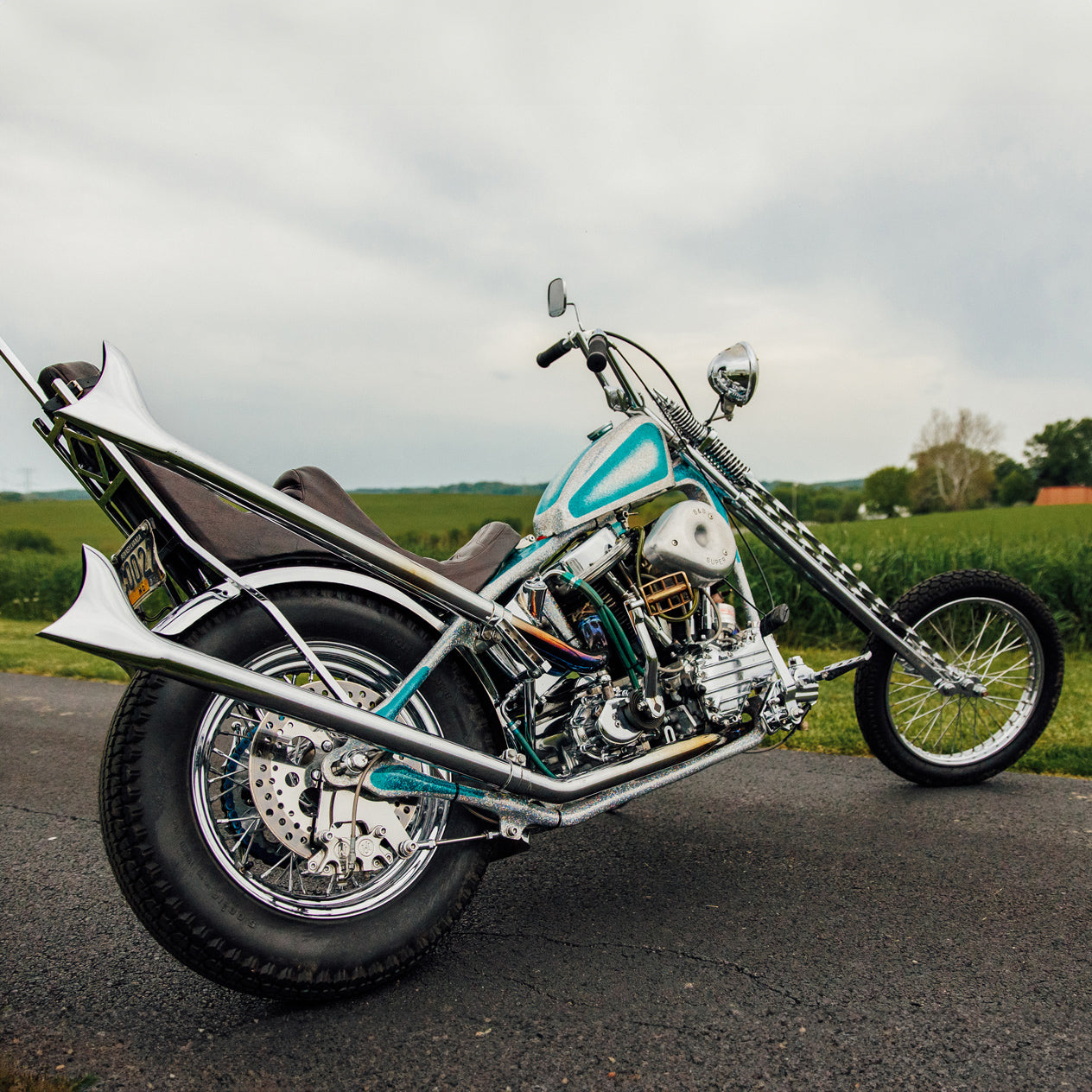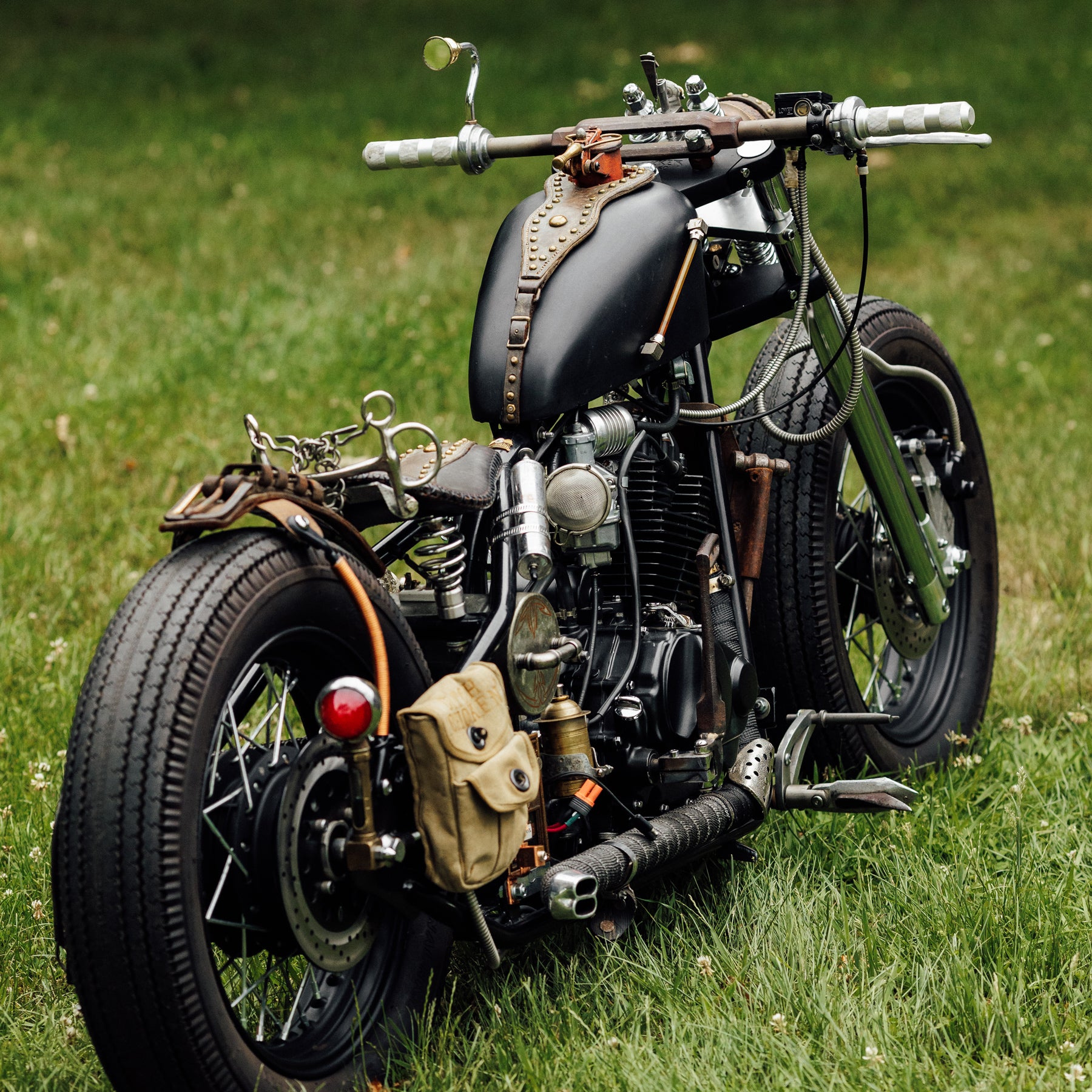

Queen Bee
Words: Kurt Diserio - Photos: Alexa Diserio
Built by Jon "Wes" Harrison
How did Mark and his friendship influence this build?
Jon Harrison: For sixteen years, I worked in the police force in McKeesport with my buddy, Mark Marino. We were in the same district and department. I watched his kids grow up, and he was the best man at my wedding. We were close. Some people liked him, some people hated him. He was wild but someone you could always have a good time with. Sometimes it wasn’t good fun, but it was fun.
At the start of this, I wanted nothing to do with bikes. Mark was always doing crazy stuff and was really into foreign cars and bikes. He had a 1969 Triumph cafe racer and always bothered me to build a bike, but I never would. Eventually, I wore down and was going to get one, but he ended up taking his own life. On September 16, 2014, he didn’t show up for work. The night before, I was up for a domestic and remember texting him but didn’t hear back. I figured he passed out. We were sent up to his place to check on him, and that’s when we found him.
I got this bike about a year or so after and basically worked on it in secret.
How did losing a best friend affect your job?
JH: I pretty much retired early. When you work with someone that long and are involved with crime, bank robberies, and murders, you have a strong bond. I would go to work, and it just wasn’t the same.
I let it consume me for a while, so I took almost a year off dealing with depression. I had talked him down before, so I kept thinking what if I had been there that morning to talk him out of it. Then I came to the realization that nothing was stopping him. It was either then or later. Mark lived a hard, fast life, and that’s how it ended. He made a permanent decision to a temporary problem. I don’t look down on him for anything but figured building this bike would help bring closure.
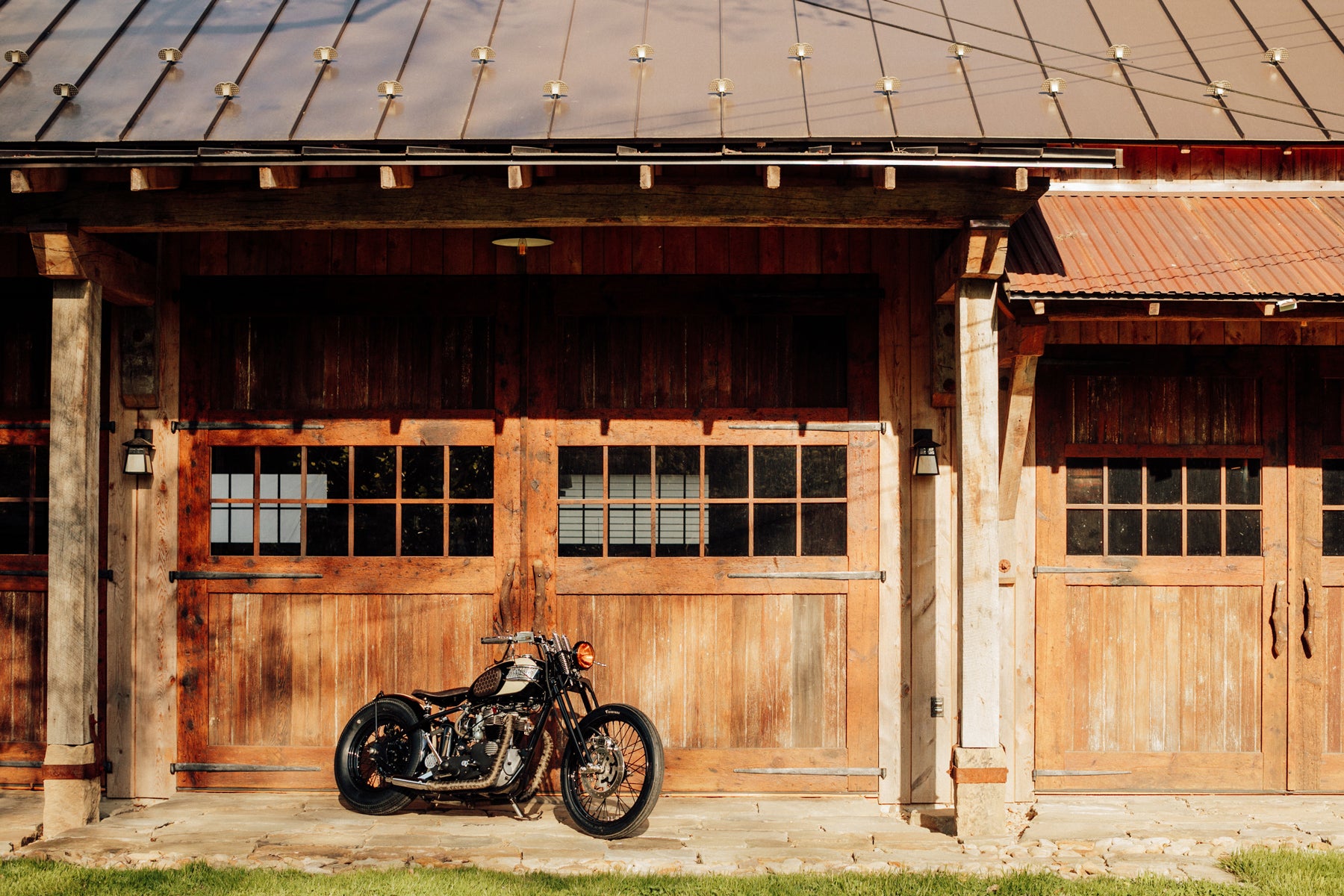
Take our readers through the build process and how it all came together.
JH: I originally picked the Triumph up from someone in Ohio. The motor was fresh inside when we got it, so there was no need to mess with any of that mechanically. It was fairly stock from what I understand.
The goal was to blend a little modern and a little of the old. After tearing the bike apart, I started with the springer front and the rigid back end. I painted the tins, then had Joel Shusta from Shusta Interiors recover the seat.
The bike used a ‘69 frame with a ‘58 tank, and one of my big things about Triumphs are the pads on the sides of the tank. They always pucker and fall apart, so I asked Joel what we could do about this. We sat around for a little bit, and he came up with the idea to make a fiberglass mold that he mounted to a piece of metal. Then he made a magnetic plate that he wrapped in a honeycomb leather so it would go together nicely.
Once I had everything pretty much painted and ready to go, I needed some help with the assembly. So, I turned to my buddy, Brandon Jordan who runs Jordan’s Auto Body in North Versailles. He and his brother, Kenny, helped finish things up, and we fired it up together. It was finished just before this year’s World of Wheels, and the feedback I got from that show has been unbelievable.
How long did it take to finish?
JH: The bike sat for periods in between work, but little by little it came together. It took roughly a year and a half before it was finished.
Can you explain the Kansas license plate and what’s unique about it?
JH: I’ve always had interesting license plates related to Pittsburgh or whatever project I’m doing. I was up late one night, my wife was sleeping, and I’m looking through antique plates online to use for shows or novelty. Mark had a strange taste in music and liked everything from Kansas with songs like “Dust in the Wind” and “Wayward Son” to Neil Diamond, Rancid, Social Distortion, and punk. When I clicked on eBay, there was a 1969 Kansas license plate with his badge number on it. What are the chances of this being a ‘69 bike with a ‘69 plate in a state that one of his favorite bands was named after that also shared his badge number? The plate had never even been on a bike—it literally came in the original package. It was meant to be.
JH: I originally picked the Triumph up from someone in Ohio. The motor was fresh inside when we got it, so there was no need to mess with any of that mechanically. It was fairly stock from what I understand.
The goal was to blend a little modern and a little of the old. After tearing the bike apart, I started with the springer front and the rigid back end. I painted the tins, then had Joel Shusta from Shusta Interiors recover the seat.
The bike used a ‘69 frame with a ‘58 tank, and one of my big things about Triumphs are the pads on the sides of the tank. They always pucker and fall apart, so I asked Joel what we could do about this. We sat around for a little bit, and he came up with the idea to make a fiberglass mold that he mounted to a piece of metal. Then he made a magnetic plate that he wrapped in a honeycomb leather so it would go together nicely.
Once I had everything pretty much painted and ready to go, I needed some help with the assembly. So, I turned to my buddy, Brandon Jordan who runs Jordan’s Auto Body in North Versailles. He and his brother, Kenny, helped finish things up, and we fired it up together. It was finished just before this year’s World of Wheels, and the feedback I got from that show has been unbelievable.
How long did it take to finish?
JH: The bike sat for periods in between work, but little by little it came together. It took roughly a year and a half before it was finished.
Can you explain the Kansas license plate and what’s unique about it?
JH: I’ve always had interesting license plates related to Pittsburgh or whatever project I’m doing. I was up late one night, my wife was sleeping, and I’m looking through antique plates online to use for shows or novelty. Mark had a strange taste in music and liked everything from Kansas with songs like “Dust in the Wind” and “Wayward Son” to Neil Diamond, Rancid, Social Distortion, and punk. When I clicked on eBay, there was a 1969 Kansas license plate with his badge number on it. What are the chances of this being a ‘69 bike with a ‘69 plate in a state that one of his favorite bands was named after that also shared his badge number? The plate had never even been on a bike—it literally came in the original package. It was meant to be.
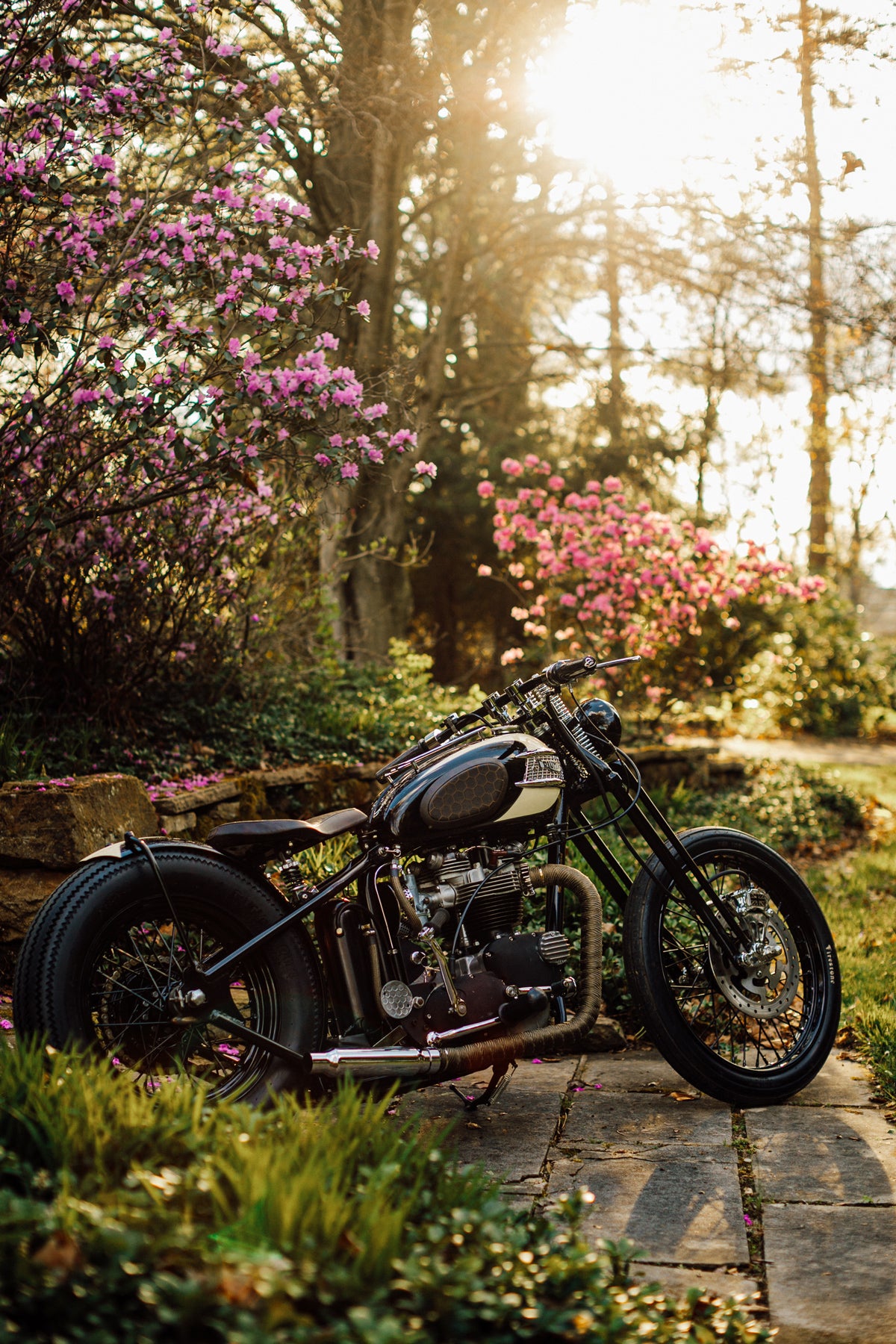

Any other little details you’d like to mention?
JH: The Woody’s grips are made out of what I believe is teak hardwood. The forward controls are from M&M. I’m using a 21-inch front wheel and a 16-inch in the rear with Coker tires. We used gold wrap on the pipes to match the chain and give the feel of it being old but new, too.
Traditionally, nobody wanted these tanks. They were called ‘nut catchers’ because when you wrecked, that’s what happened. The people you saw riding with this type of tank were the likes of Steve McQueen, James Dean, and John Lennon, all who met young deaths.
What does the bike mean to you now that it’s finished?
JH: It brings closure to a chapter in my life. For a lot of years, I felt guilty because I didn’t finish it. My police career, my friendship with Mark, this brings closure to it all. It’s really a new beginning.
Besides bike shows, do you have any plans for what you’d like to do with the bike?
JH: I’d like to get out to the Bonneville Salt Flats and take it for a ride. That’s on the bucket list. When we retire, it’d be nice to take a year off and travel across the country. Maybe head down south, then up west for a month or so. I think it’s what I need to do.
Any advice to the other builders or enthusiasts?
JH: If you hang around like-minded people, people who are great at things and have the eye for attention-to-detail, you’ll get better, too. This whole bike happened that way. Joel did the leather, I did the tank, Brandon Jordan did the assembly, and my wife and I wrapped the pipes. When you surround yourself with talent, you follow suit. It pushes you to excel at what you have an interest in.
JH: The Woody’s grips are made out of what I believe is teak hardwood. The forward controls are from M&M. I’m using a 21-inch front wheel and a 16-inch in the rear with Coker tires. We used gold wrap on the pipes to match the chain and give the feel of it being old but new, too.
Traditionally, nobody wanted these tanks. They were called ‘nut catchers’ because when you wrecked, that’s what happened. The people you saw riding with this type of tank were the likes of Steve McQueen, James Dean, and John Lennon, all who met young deaths.
What does the bike mean to you now that it’s finished?
JH: It brings closure to a chapter in my life. For a lot of years, I felt guilty because I didn’t finish it. My police career, my friendship with Mark, this brings closure to it all. It’s really a new beginning.
Besides bike shows, do you have any plans for what you’d like to do with the bike?
JH: I’d like to get out to the Bonneville Salt Flats and take it for a ride. That’s on the bucket list. When we retire, it’d be nice to take a year off and travel across the country. Maybe head down south, then up west for a month or so. I think it’s what I need to do.
Any advice to the other builders or enthusiasts?
JH: If you hang around like-minded people, people who are great at things and have the eye for attention-to-detail, you’ll get better, too. This whole bike happened that way. Joel did the leather, I did the tank, Brandon Jordan did the assembly, and my wife and I wrapped the pipes. When you surround yourself with talent, you follow suit. It pushes you to excel at what you have an interest in.

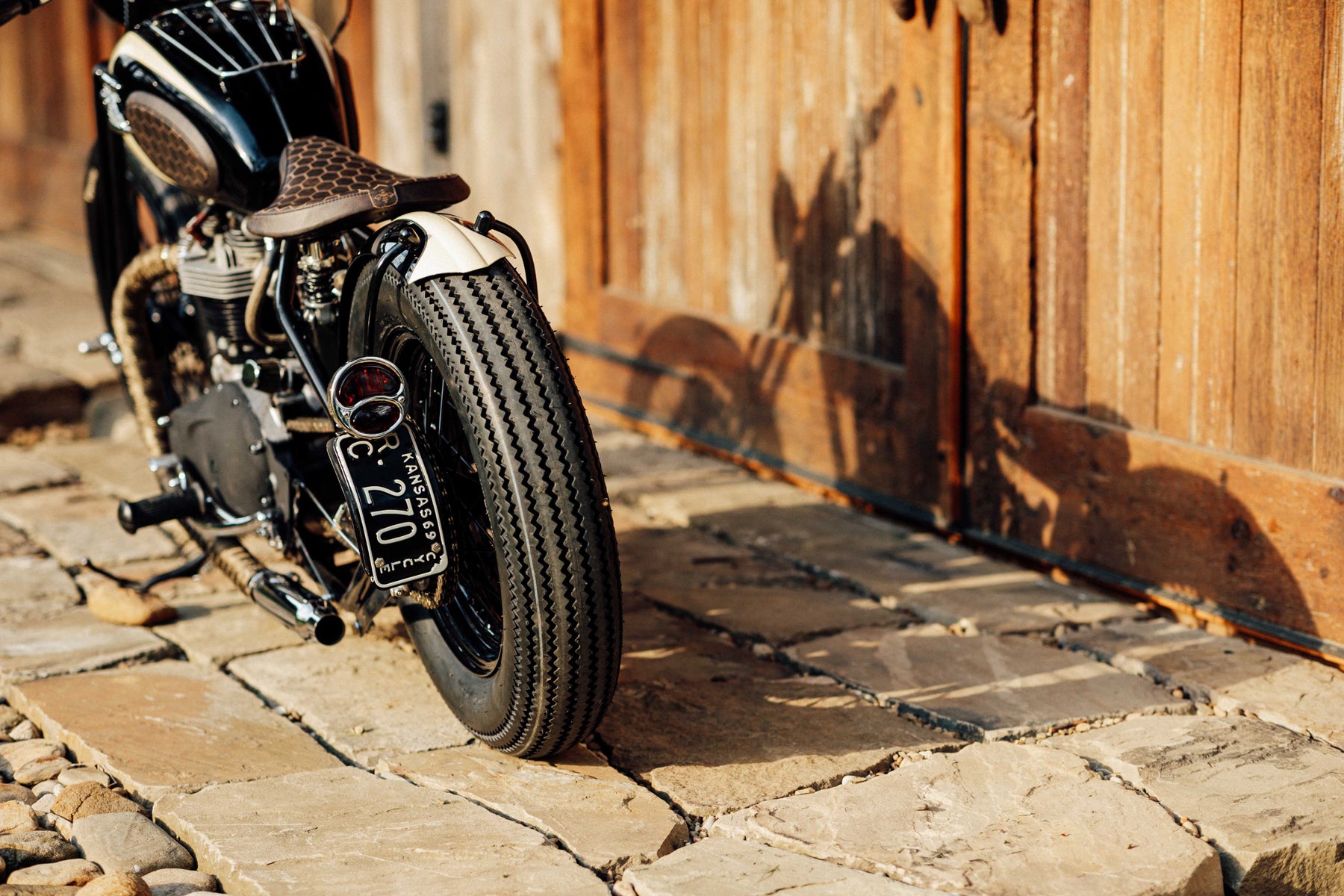



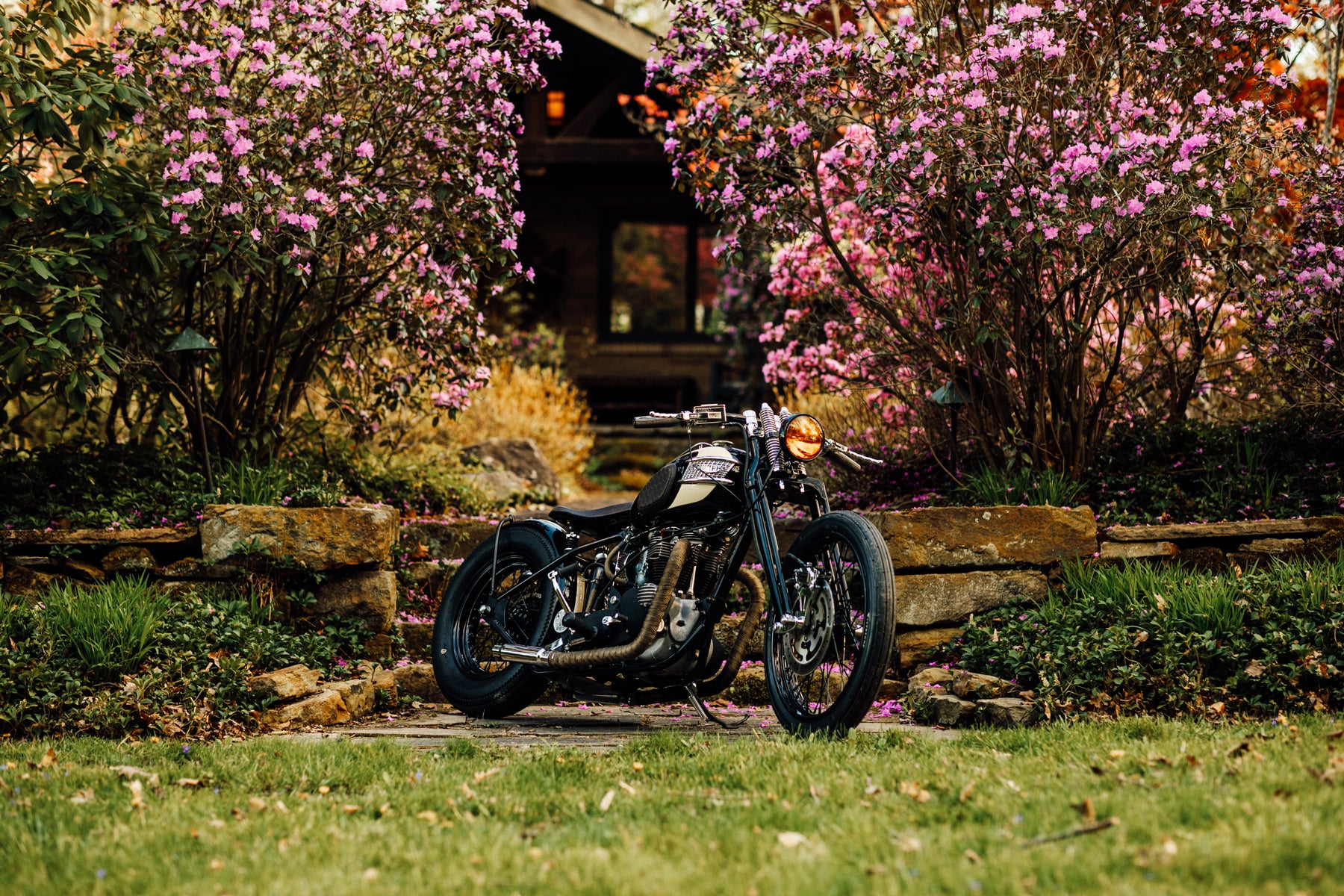
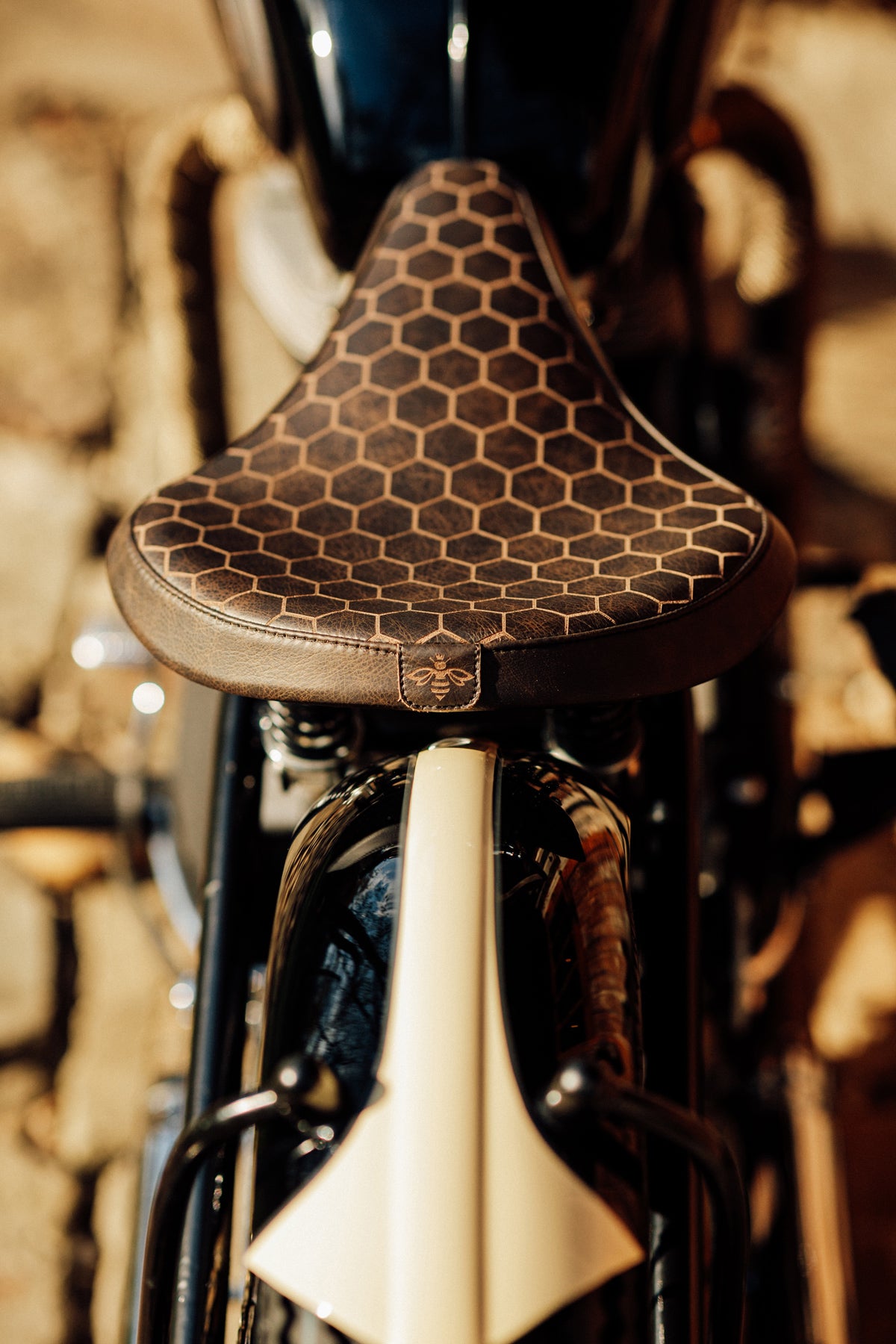






TOMBSTONE CUSTOMS

